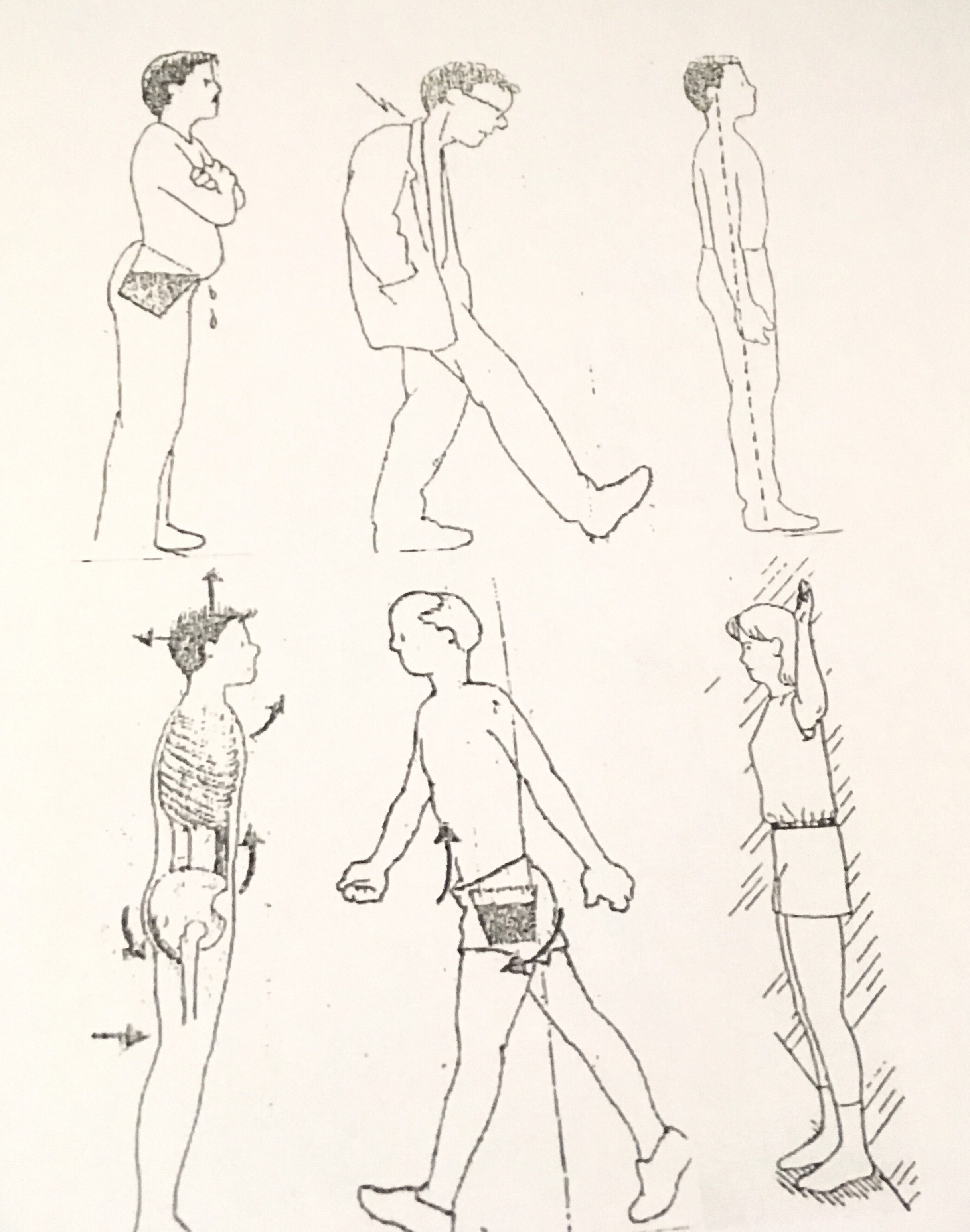It is estimated that two out of every three American adults now have forward head posture (FHP). An increasingly common condition in which the head juts out past the shoulders, placing excessive stress on the neck and back.according to an article in BottomLine/Health by Stevan Weinger DC, a member of the postgraduate facility at Logan University in Chesterfield, Missouri. Also, author of Stand Taller, Live Longer: An anti-aging Strategy.
FHP can be caused by texting,driving, or the type of glasses you wear, frequent use of computers,or I-phones. People tend to lean forward in a effort to see their computer screens. Other triggers include seats in autos encouraging an unnatural bend in the body, or reading or watching TV. Straining to see the page or screen forces the head forward. Glasses that force you to tilt your head backwards and stick your chin out in order to see through the lower portion of the lenses. And, of course the natural process of aging as the neck muscles weaken, the head drifts forward.
Every inch that your head moves forward past the spine adds 10 # of pressure to the neck and back, which often leads to muscle and joint pain and headaches.
A recent study revealed after studying 800 adults over the age of 65 for five years, those who began leaning forward at an early age were 3.5 times more likely to require assistance with bathing, dressing, getting in and out of chairs than those who started leaning forward later.
A photo is all you need to determine if you have FHP. Look at the photo, the middle of your ear should be lined up with your shoulder,hipbone and ankle. If your head is forward, the alignment of your body is off.
How to Help Yourself
Do you remember when you were young your parents told you, “to stand up straight” It would be nice to have a recording of it now. As we age our core and trunk muscles weaken causing the head to come forward.
The average American logs about 11 hours of screen time per day, including time spent on computers, using smartphones and watching tv.
Joseph Pilates emphasized proper posture known as PILATES POSTURE.
When talking on the phone stand or sit maintaining the pilates posture, as all activity initiates from the core muscles
To initiate core stabilization:
Sitting in a chair: Push the low back against the back of the chair.
Inhale to prepare. Blow out and pull the belly button up and back, pushing the back against the chair, (think of pelvis as a bucket, getting it level) elongate the spine ,pull head back on shoulders and sit up straight. Inhale to relax and repeat.
Standing up:
1. Inhale to prepare
2. Stand up straight keep the head on the shoulders, not the chest.
3. Blow out forcefully, like blowing out a candle at the same time pull the pubic bone to the ribs and drive the belly button inward towards the spine, pause and breath in slowly.
4. Repeat every 5 seconds
5..Visualize your pelvis as a bucket of
water, pull up on the bucket and keep it level throughout the day..
Check your posture every couple days with back against the wall. Practice PILATES POSTURE keeping back, mid back and head against the wall.
